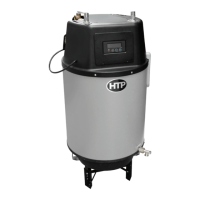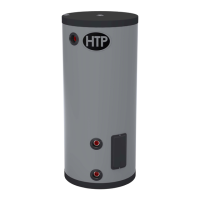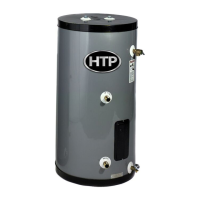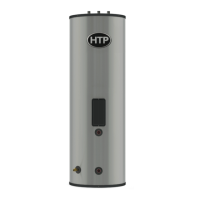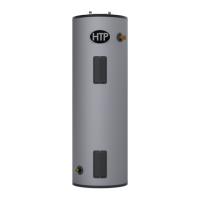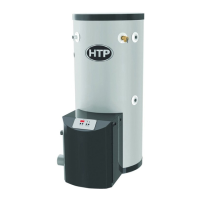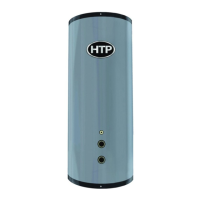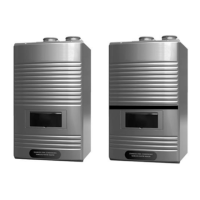LP-605 Rev. 000 Rel. 009 Date 8.16.18
34
Part 6 - Installing the Condensate Drain
This condensing high eciency water heater has a condensate
removal system. Condensate is water vapor derived from
combustion products, similar to that produced by an automobile
when it is initially started. It is very important that the condensate
line is sloped down away from the heater and to a suitable drain.
The condensate line must remain unobstructed. If allowed to
freeze in the line or obstructed in any other manner, condensate
can exit from the water heater tee, resulting in potential water
damage to property.
When installing a condensate pump, select one approved for use
with condensing heaters and furnaces. The condensate pump
should have an overow switch to prevent property damage from
spillage.
Condensate from the heater will be slightly acidic (pH from
3.2 to 4.5). Check with your local gas company to determine if
combustion condensate disposal is permitted in your area. Install
a neutralizing lter if required by local codes.
NOTES:
1. Due to its ecient design, the water heater produces condensate
(water) as a normal by-product. This condensate is acidic, with a
pH level between 3 and 4. This condensate must be drained away
from the water heater and disposed in accordance with all local
regulations.
Figure 29 - Power Vent Terminations
2. Condensate line must be pitched at least ¼” per foot to properly
drain. If this cannot be done, or a very long length of condensate hose
is used, increase the condensate line to a minimum of 1” ID and place
a tee in the line after the condensate neutralizer to properly reduce
vacuum lock in the drain line.
3. Use corrosion-resistant materials approved by the AHJ to drain
condensate. In the absence of such an authority, ½” PVC and CPVC
drain pipe complying with ASTM D1785, F441, or D2665 may be used.
Cement must comply with ASTM D2564 for PVC pipe or F493 for CPVC
pipe. For Canadian applications, use CSA or ULC certied PVC or CPVC
pipe, ttings, and cement.
4. A frozen condensate line could result in a blocked vent condition.
It is very important to protect the condensate line from freezing
temperatures or any type of blockage. In installations that may
encounter sustained freezing conditions, the use of heat tape is
recommended to avoid freezing of the condensate line. It is also
recommended to bush up the condensate line size to 1” and terminate
condensate discharge as close to the unit as possible. Longer
condensate runs are more prone to freezing. Damages due to frozen
or blocked condensate lines ARE NOT covered by warranty.
5. Support of the condensate line may be necessary to avoid blockage
of the condensate ow.
6. Local building codes may require an in-line neutralizer (1) to be
installed (not included) to treat the condensate. If required by local
authorities, a condensate lter of lime crystals, marble, or phosphate
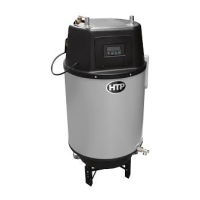
